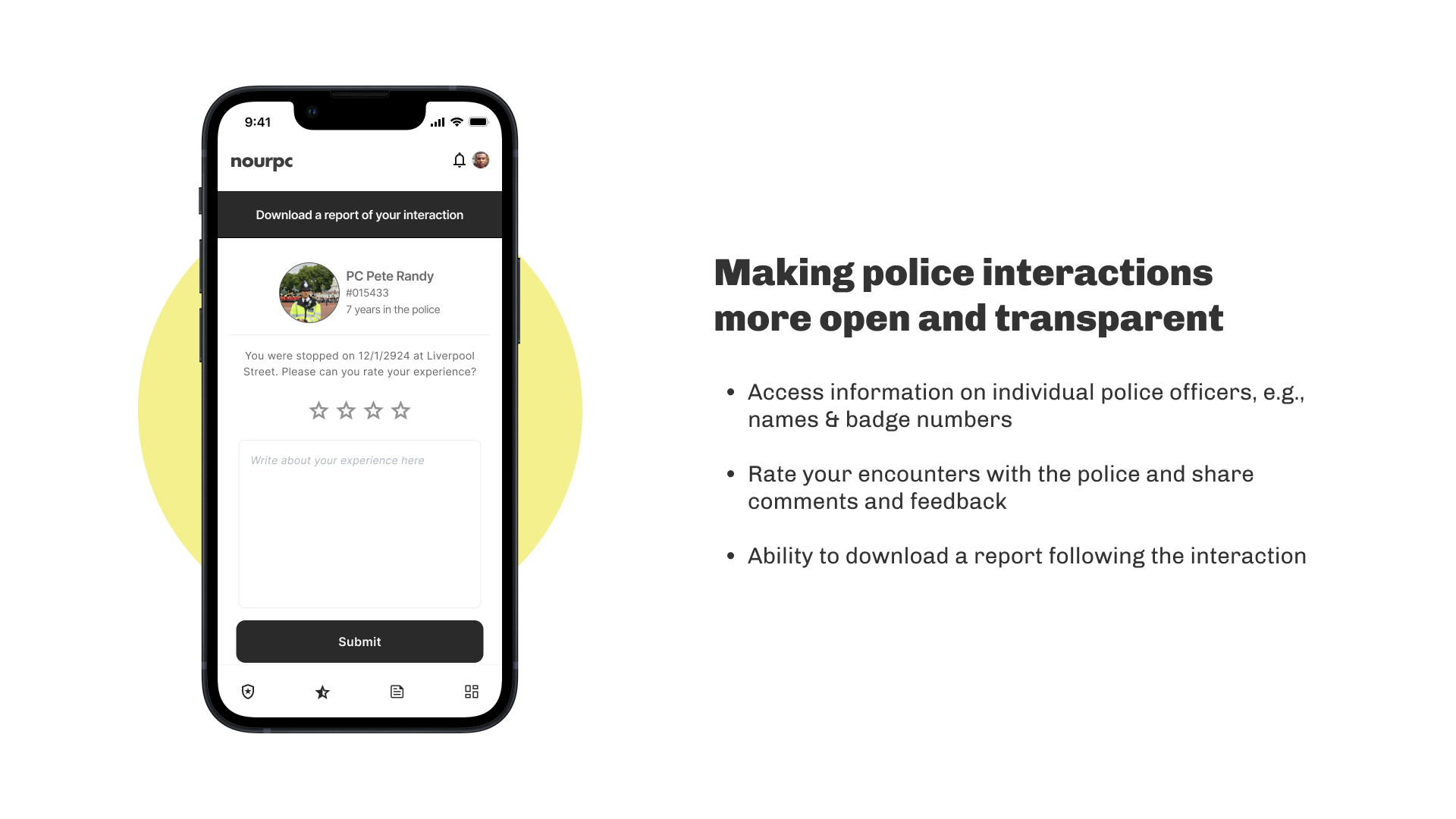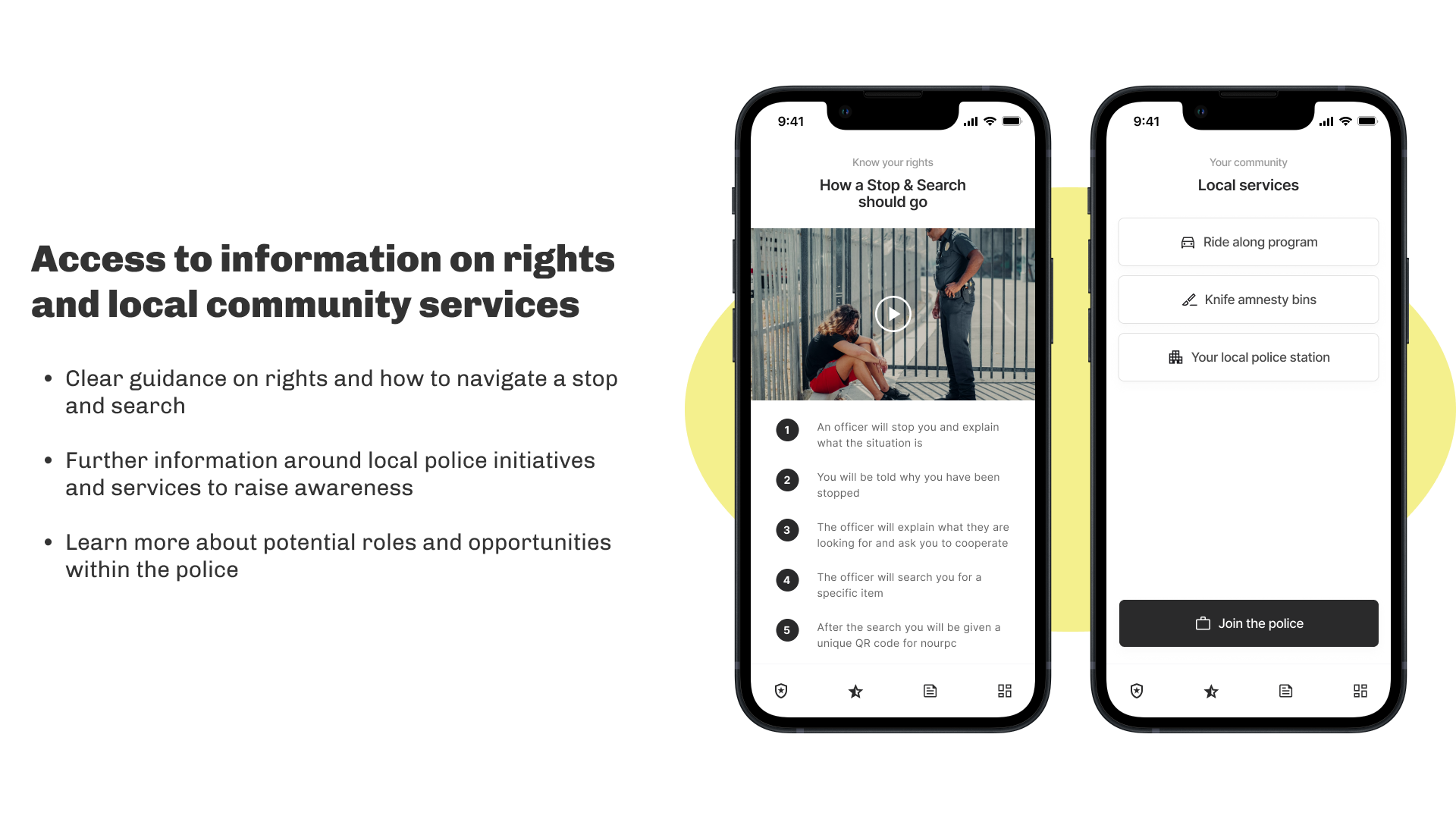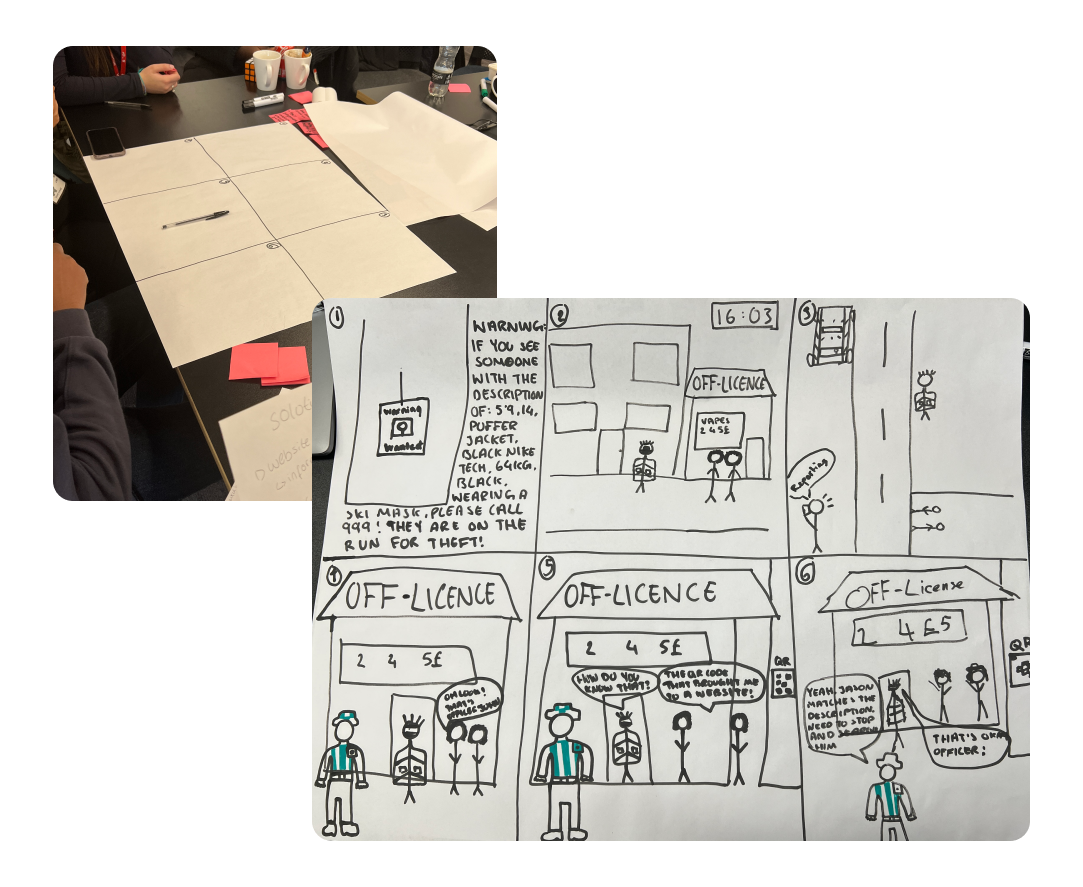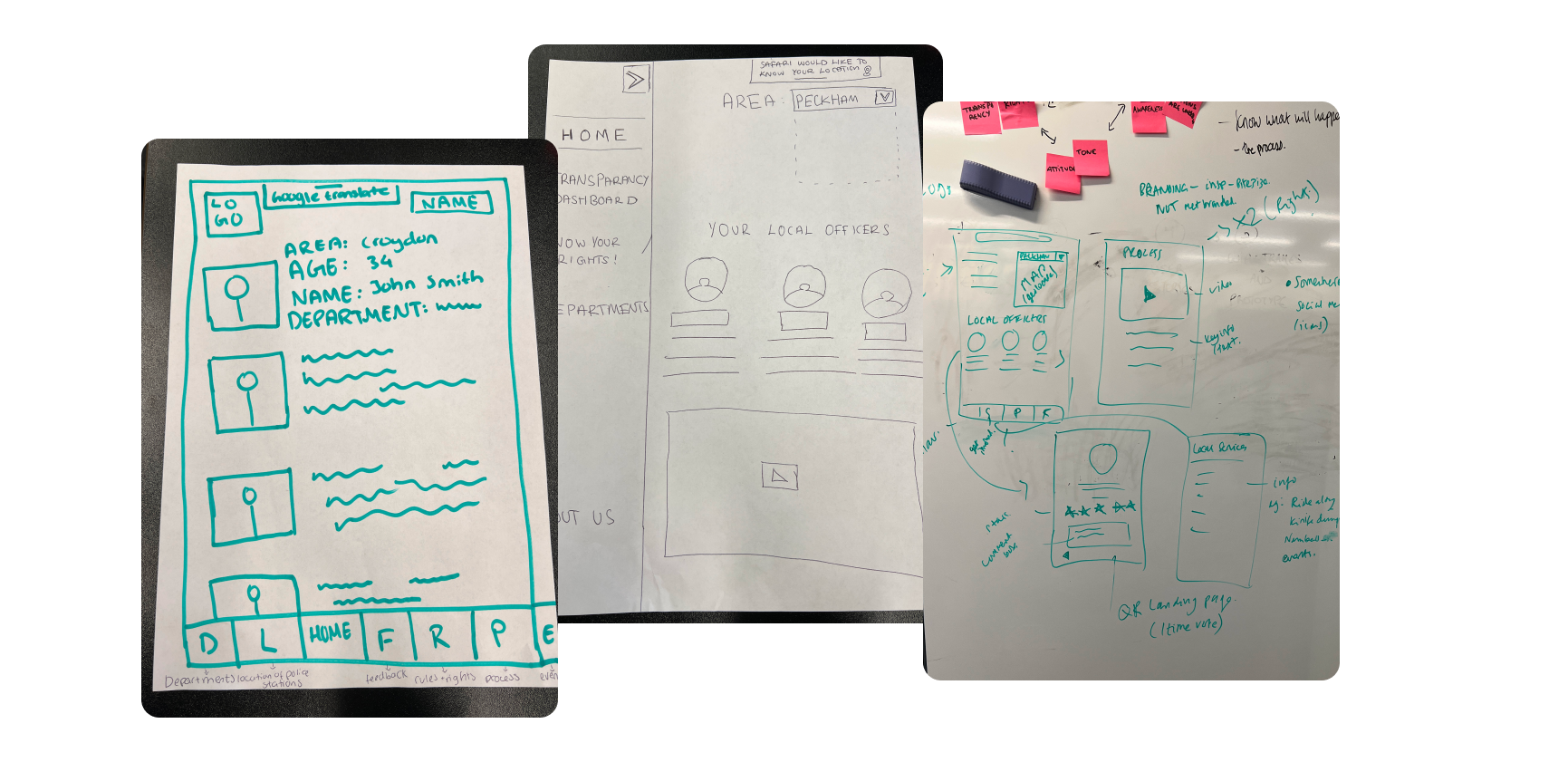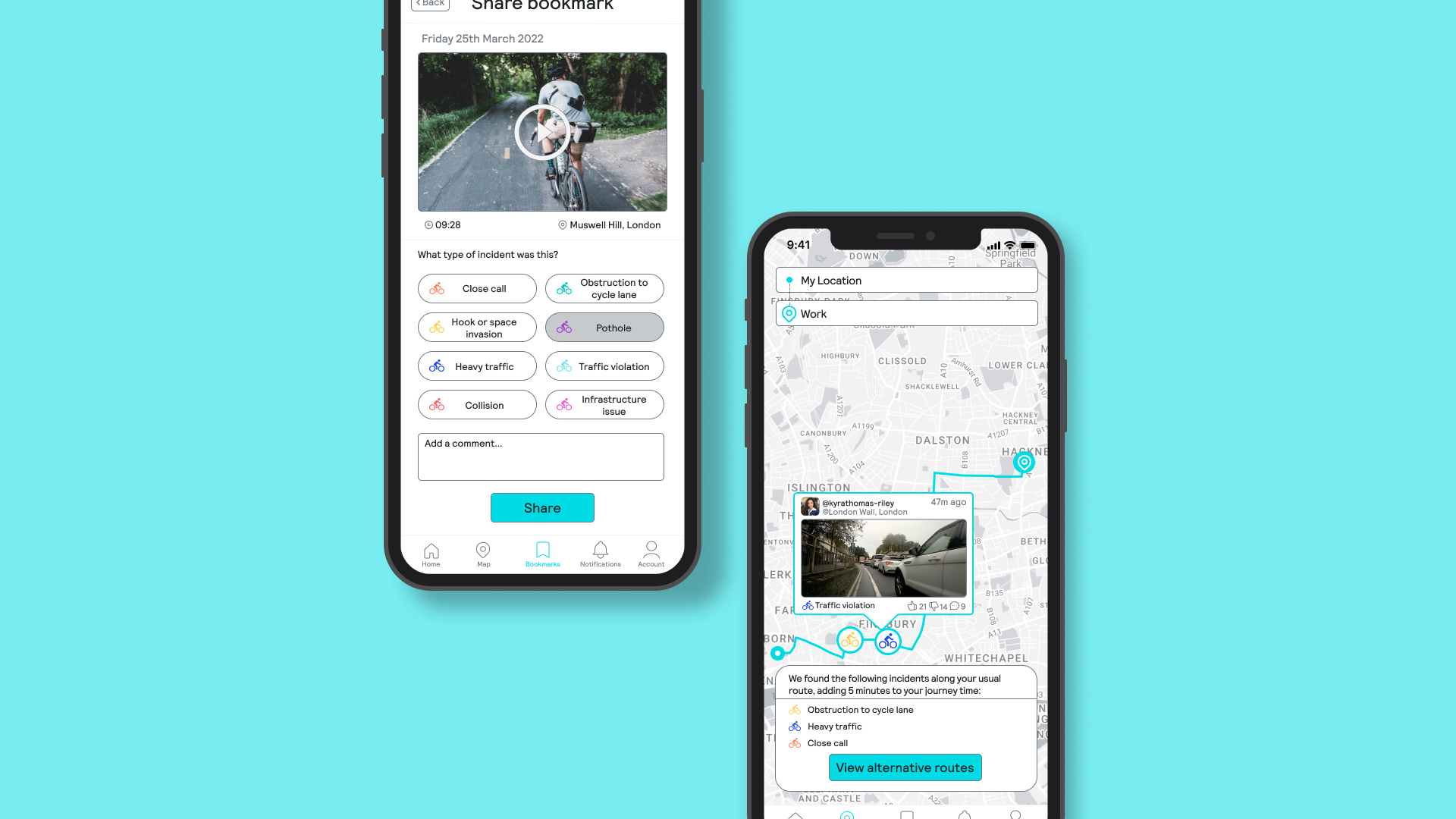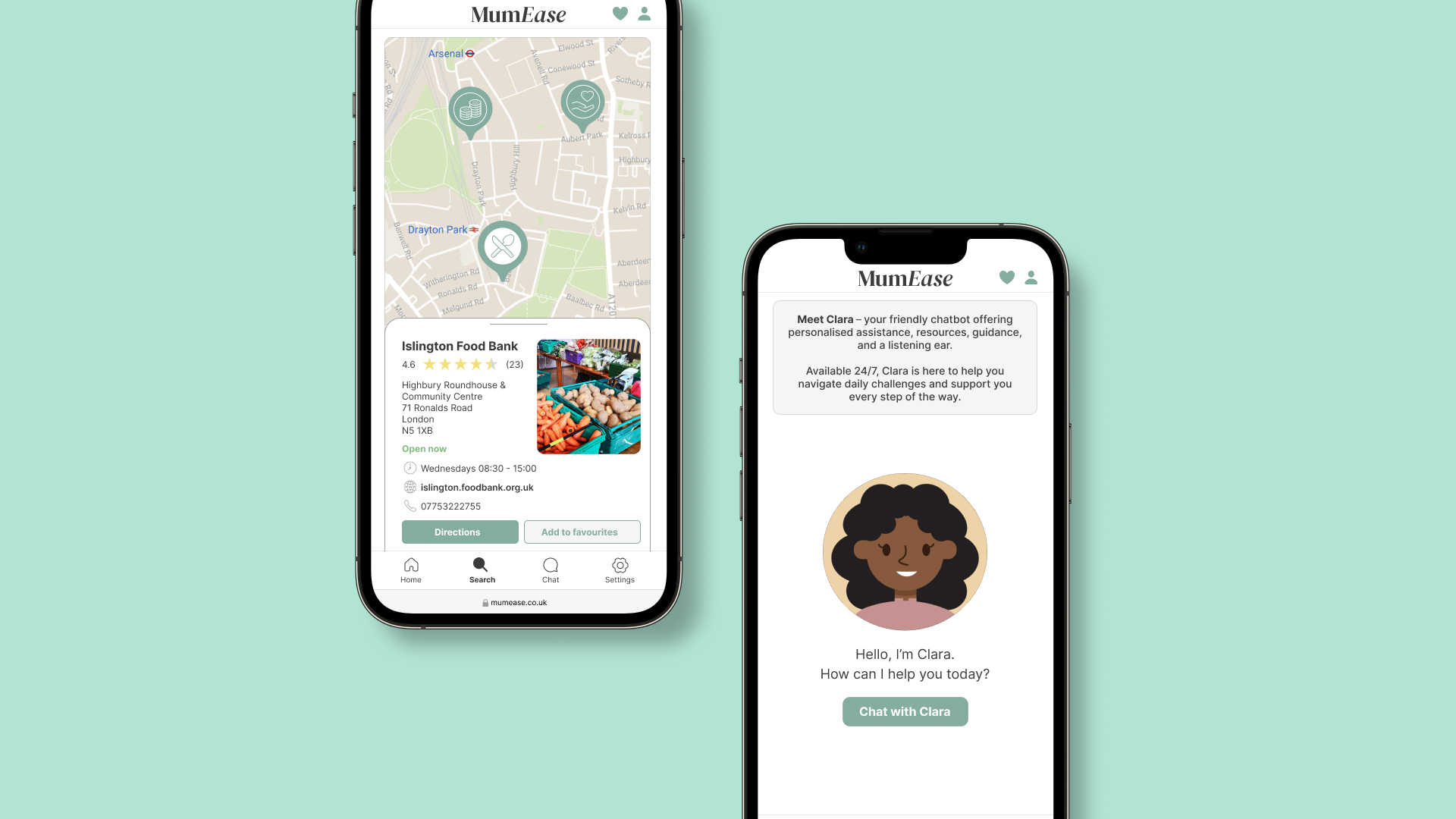Overview
Young people can use NoUrPC to view details on police officers during interactions and access general guidance and services.
NoUrPC evolved from a collaborative initiative sponsored by Amazon Web Services. The project brought together Experience Haus alumni designers, City of London Police, Metropolitan Police and 50 students (aged 16-21), who worked together to create a series of digital service design concepts. The objective was to develop a platform aimed at improving the relationship between young people and police in London, ultimately fostering positive perceptions of, and trust in, the police among young people.
My role
This was a one-day hackathon style project. My team comprised 3 designers, 5 students and 1 youth mentor. I focused on user research, storyboarding guidance, and UI design.
Duration
2 days (Sept 2022 + Feb 2024)
Tools
Figma, Slack, Google Slides, Whiteboard, Pen + paper
The problem
Young people in London have a troubled relationship with the police.
The relationship between young people and the police in cities is often strained, marked by feelings of fear, anger, and frustration. Incidents of brutality and profiling deepen distrust, leading to a sense of alienation and resentment. Bridging this gap requires meaningful engagement and dialogue to foster trust and cooperation.
The solution
NoUrPC strives to improve the relationship between young people and the police by increasing transparency and building a sense of connection.
Background
The project began with a one-day event in September 2022, during which several concepts emerged. Designers and participants later reconvened for a second one-day event in February 2024 at Amazon HQ to build on these ideas so that the police could take them into development. This case study is centred around the second day event.
I worked with 2 other designers, 5 students and 1 youth mentor. There were also industry experts and police officers of varying ranks present to observe and provide input in shaping our designs, ensuring their viability and alignment with realistic goals.
User research
We conducted user interviews with the five students to understand their pain points.
Our aim was to gain a better understanding of how they felt about their relationship with the police and any encounters that they’ve had with them. We asked questions such as:
What kind of emotions do you feel when interacting with police?
Do you feel comfortable reaching out to them when you need assistance?
Tell us about an encounter you’ve had with the police.
Have you ever been stopped and searched?
How would you describe the behaviour and attitudes of police towards young people in your area?
How do you think the police could improve their relationship with young people in your community?
The students shed light on their challenging interactions with the police.
While there were some positive insights, such as the perception of police as helpful and reliable, these were largely overshadowed by an overwhelming discourse of negativity.
Key insights
We compiled the findings into an affinity map, revealing the major trends:
Awareness and transparency: there was a unanimous lack of confidence in knowledge among the students, particularly in knowing their rights and how to navigate a stop and search interaction. They also shared views on an overall lack of transparency.
Discrimination: overall, students felt they were often targeted by police based on age. Additionally, individuals from ethnic backgrounds in particular expressed unease about their interactions with the police, voicing concerns around racial profiling and making reference to stories of police brutality in the media.
Powerlessness: there was a widespread feeling of intimidation and vulnerability, attributed to the imbalanced power dynamics and imminent threat of excessive force, along with a perceived lack of police accountability.
Optimism: despite these challenges, there was a sense of hope and opportunity – students shared constructive suggestions to address their concerns and foster more positive engagements with the police.
Research findings
Studies show that there is work to be done here.
The complex relationship between young people and police, particularly in inner-city areas like London, has been well documented.
Between April 2021 and March 2022, there were 27.2 stop and searches for every 1,000 black people, compared with 5.6 for every 1,000 white people in England and Wales.
Source: gov.uk
Official statistics reveal that police stop and searches occur at a substantially higher rate for individuals of black ethnicity compared to their white counterparts, validating the concerns shared by the black students in our research.
Over half (54%) of all stop and searches of persons in the year ending March 2021 were on those aged between 10 and 24 years old.
Source: stop-watch.org
Young people are subjected to these procedures far more frequently than older individuals, suggesting that the police disproportionately target them based on age. This disparity likely contributes to their mistrust of police officers, and raises valid questions about fairness and bias within law enforcement procedures.
How might we?
How might we promote transparency and facilitate more positive interactions between young people and the police to build mutual trust and understanding?
Ideation
During the ideation phase, students collaborated with police officers and industry experts to brainstorm ideas for the product. They discussed potential functionalities that would be mutually beneficial for both young people and police.
Outlining the three main features.
QR code integration:
officers carry a unique QR code alongside their badges, linking users directly to the officer’s profile. This feature would aim to increase transparency and encourage young people to build connections with officers.
QR codes strategically placed throughout local areas offer instant access to police information specific to that community, helping users feel better informed.
Rating system: users rate their interaction with an officer and escalate if necessary. This feeds into a wider database that would be consistently reviewed by police so they can address any worrying issues or concerns.
Resource hub:
provides information on individual rights and how to handle stop and search encounters or other police interactions.
the officers also suggested integrating information to raise awareness on police initiatives such as the ‘Ride along’ where members of the public can accompany officers on patrol, and ‘knife amnesty bins’ where people can safely surrender harmful weapons at collection points across the capital. These initiatives can further contribute to building trust and positive relationships between the two groups.
Students agreed on the colloquial name ‘NoUrPC’ (abbreviation of ‘know your Police Constable’) as part of their efforts to build a product that would appeal to young people.
User storyboarding
The students meticulously outlined each step in the storyboard, illustrating how a user would interact with the product.
We wanted to actively engage the students in the process, empowering them to lead the creation of a storyboard envisioning how a digital platform could provide a solution. I provided guidance on the process of creating a storyboard, explaining their importance in the design process.
It was inspiring to see their enthusiasm as they exchanged ideas and became fully immersed in the task.
Design
Sketching out low-fidelity wireframes.
Next, we tasked the students with sketching low-fidelity wireframes on paper and whiteboard to visualise the appearance and functionality of the screens, bringing the ideas to life.
The final MVP product.
We translated the concepts into high-fidelity wireframes and a prototype. To end the day, we compiled our findings, process and designs into a slide deck to present to everyone.
Next steps
The students from each team presented their ideas, all of which were really creative and inspiring. Our team even incorporated some role play to bring the product experience to life. The concepts are being taken forward for iteration and further development, with the police hoping to use elements from different designs. Exciting – watch this space!
Check out these videos to see how both days went:
Day 1 (September 2022)
Day 2 (February 2024)
key takeaways
My reflections:
Empower young people to express themselves — decision-makers and businesses frequently make choices on behalf of the youth without seeking their input. This initiative challenged that, granting young people the freedom and autonomy to share their opinions and play an active role in the development of a product tailored to their needs.
The importance of user-centred design — this project placed the young person at the centre of product development. This strategy enabled us to gain a comprehensive understanding of our user’s needs, pain points and frustrations. This user-centred approach ensured that the final product met the needs of our target audience, demonstrating a seamless integration between technology and human interaction.
Embracing diversity of thought — through the involvement of various stakeholders at each design phase, the process became truly collaborative and holistic, enriching the experience entirely. Contributions from students, police, experts, and designers infused our project with diverse expertise and perspectives. This was a great example of how we can use diversity of thought to problem-solve, work towards a common goal and drive meaningful change.
Police are people, too — throughout the day, I had thought-provoking conversations with officers who shared that they often feel seen for their uniforms before their humanity. It was inspiring to see their commitment to the project and making a positive difference. This reminded me to always look beyond appearances and recognise the individual behind the role, fostering empathy and understanding.


